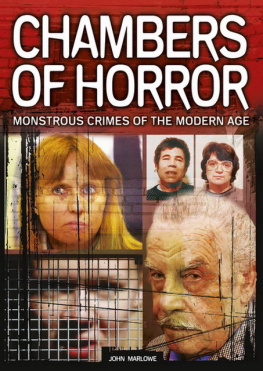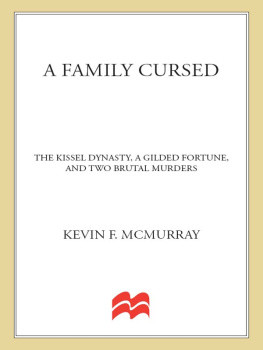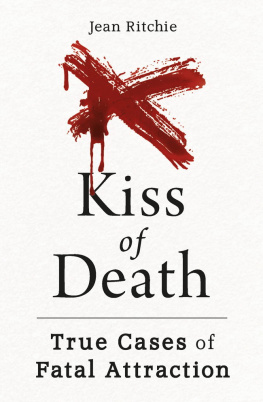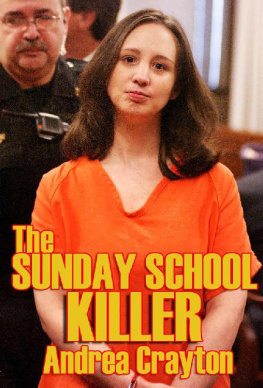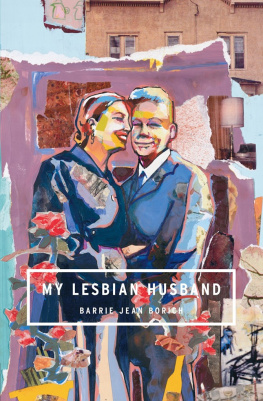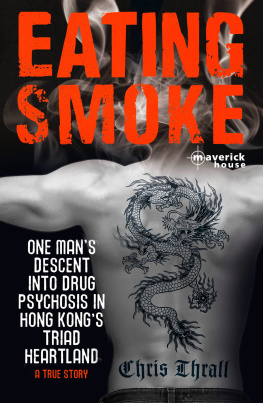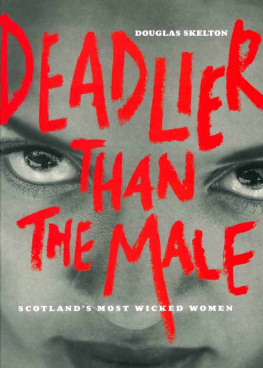
This edition published in 2012 by Arcturus Publishing Limited
26/27 Bickels Yard, 151153 Bermondsey Street, London SE1 3HA
Copyright 2012 Arcturus Publishing Limited
All rights reserved. No part of this publication may be reproduced, stored in a retrieval system, or transmitted, in any form or by any means, electronic, mechanical, photocopying, recording or otherwise, without prior written permission in accordance with the provisions of the Copyright Act 1956 (as amended). Any person or persons who do any unauthorised act in relation to this publication may be liable to criminal prosecution and civil claims for damages.
Picture Credits
Images courtesy of Corbis, Fairfax Media, Jupiter Entertainment, Linda Shaw, Miami Herald, News Observer, PA Photos, Rex, The Enquirer and Topfoto. For more information contact info@arcturuspublishing.com.
ISBN: 978-1-84858-952-0
AD002432EN
Contents
Introduction
This book is about some of the evil acts that have been committed by wives, girlfriends and common-law wives. It contains stories of deceit, betrayal and, ultimately, murder. The victims of these women are more often than not family members: mothers, fathers, sisters, brothers and, in almost every case, husbands.
All of the murderers presented here were caught and each one of them received justice of a sort. Most of these criminals initially denied any involvement in the crimes that they had committed, despite being faced by overwhelming evidence to the contrary. However, many of them eventually came up with interesting explanations, even excuses, for their actions.
It is said that no one is innocent. We are reminded of this many times over by the various defences mounted on behalf of the accused. Victims are often made to share the blame for their demise, as was the case in the murder of Pastor Matthew Winkler. After admitting that she was guilty of his murder, the dead mans wife expressed her wish that the reputation of the pastor, a mighty fine person, should not be tarnished. Yet, during the subsequent trial she did just that.
Contradicting her statement to the police, Mary Carol Winkler portrayed her dead husband as a physically abusive pervert. Winklers testimony was strikingly similar to the statements of other women who have been accused of killing their spouses. Many of their victims were depicted as dark individuals with heavily guarded secret lives. Husbands with no history of violence suddenly became physically abusive brutes, who often made their wives engage in sexual practices that they found distasteful.
This treatment is not limited to spouses, nor is it exclusively meted out to the dead.
When Marie Hilley was accused of murdering her husband, mother and mother-in-law with arsenic the evidence against her was overwhelming. Yet she did not hesitate to blacken her daughters character. Hilleys lawyers attempted to explain the high levels of arsenic in her daughters system by portraying the young woman as an unstable, drug-addicted, suicidal lesbian, who was more than capable of poisoning herself. Maries use of poison is reminiscent of a time when women had a reputation for being quiet killers. Poisoning was once the preferred method of female murderers. No more. The arsenic-laced plum cakes and coffee that were served by Nannie Doss between the 1920s and 1954 have been replaced by handguns, shotguns and knives.
One thing that has not changed in recent decades is motive. The vast majority of murders committed by women are carried out for profit. This is particularly true of female serial killers. On the other hand, men are often sexually motivated when they commit murder. The methods adopted by male and female serial killers are also significantly different. While men prey on strangers, women tend to murder those who depend upon them in some capacity, including immediate family members.
Many people find it difficult to believe that women are capable of serial murder so female killers have often been able to avoid apprehension for extended periods. Thus, Dorothea Puente was permitted to leave her property and disappear, even as bodies were being excavated in her back garden. It is unlikely that a man would have received the same treatment. Likewise, it seems inconceivable that Marie Hilley could have avoided suspicion had she not been a woman.
The concept of the evil wife seems so much more shocking than that of the evil husband, perhaps because women are so closely associated with nurture and support in western society. In the case of most women societys trust is not misplaced, but one must be ready to accept that there are always exceptions.
John Marlowe
Montreal, Quebec
Jane Andrews
From Buckingham Palace to life imprisonment
Although she was brought up in modest circumstances she was the daughter of a carpenter and his social worker wife Jane Andrews would enjoy a lavish lifestyle that included extensive travel. Because she was attractive and intelligent, she was able to secure a position with a member of the royal family when she was very young. However, the personality that had gained her entry to Buckingham Palace would show itself to have a dark and dangerous side. What had begun as a fairy tale ended in a scene worthy of a horror film.
Jane was born in Cleethorpes, in North East Lincolnshire, in 1967. She was the youngest of three children. Both of her parents worked, which was not so common in those days. It was necessary, though, because full-time employment was a rarity for Janes father. As time progressed, and the familys debts grew, Janes parents were forced to sell their home. When she was eight years old her family moved to Grimsby, where they settled into a cramped terraced house with an outside lavatory. The move to cheaper accommodation did little to alleviate the familys financial pressures. Jane recalled one instance in which she and her siblings were told to look around the house for loose change so that their mother might buy a loaf of bread. This lack of money led to frequent arguments, so Jane found it increasingly difficult to concentrate on her school homework. Perhaps unsurprisingly, she did not always fit the description of a good student, even though she achieved high grades.
Troubled teen
At the age of 15, she was caught playing truant. After a social services worker had informed her mother, Jane swallowed a cocktail of the pills she had found in the family medicine cabinet. Even though her mother quickly realized what Jane had done, she did not call an ambulance. Jane would remain in her bedroom, slipping in and out of consciousness until she finally recovered. Her parents were adamant that the suicide attempt would not be made public. The incident had no effect on Janes truancy. In a relatively short time, she had destroyed what might have been a successful academic career. She ended up at the Grimsby College of Art, where she studied fashion design.
Jane had been sexually active with a number of partners since the age of 15. Perhaps it was small wonder, then, that she became pregnant while she was attending the Grimsby college. However, the abortion that followed caused her a great deal of mental trauma.
After graduating from college the best she could manage was a job as a sales assistant at Marks & Spencer in Grimsby. It did not appear to be the sort of work that offered much of a future, so she kept on looking for the right opening. In 1988 she answered an anonymous advertisement in The Lady magazine: it was for a personal dresser. Six months passed before Jane received a response. As it turned out, the advertisement had been taken out on behalf of the Duchess of York. Jane was summoned for an interview, which she passed with flying colours. She began her employment as personal dresser to the duchess in July 1988, one month before the birth of Princess Beatrice.
Next page

